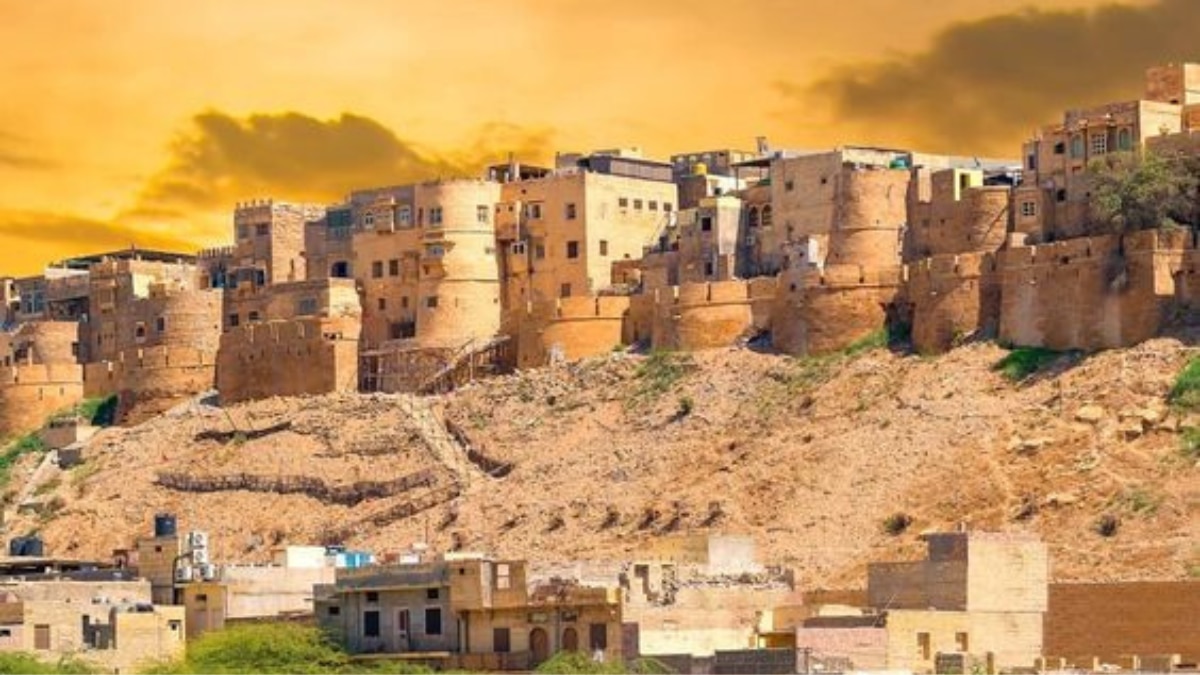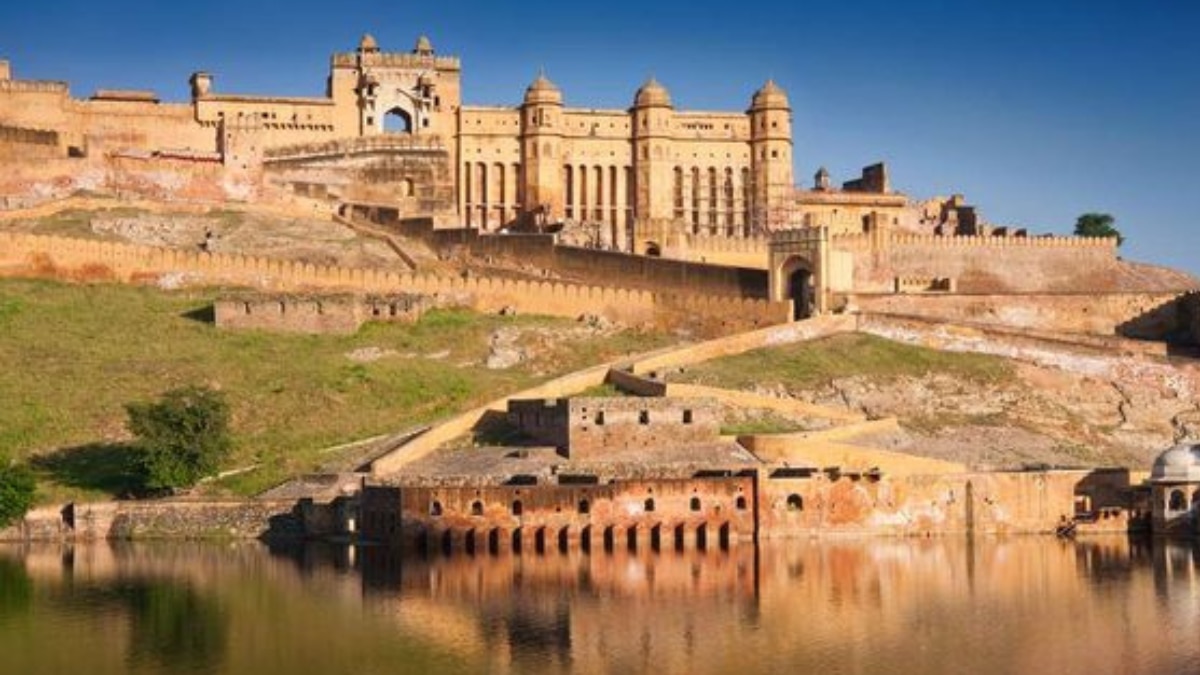Exploring Rajasthan’s Forts: An Odyssey To Heritage
Discover the majestic forts of Rajasthan, where history and architecture intertwine. Each fort tells a unique story and invites you to discover the rich heritage and culture of this beautiful land.

Rajasthan is a country rich in history and is a treasure trove of beautiful architecture that bears witness to its past. The majestic fort with its massive walls and beautiful stonework offers a glimpse into the kings and queens who once ruled this region. Each fort tells a unique story that reflects tales of bravery, romance and rich culture.
As you pass through these beautiful forts, you will come across vast courtyards, beautiful gardens and panoramic views that reflect the rugged beauty. The true colors of the desert sun reflecting off the ancient rocks add to the mystery and make every visit a wonderful experience. A trip to the forts of Rajasthan is not just a journey through history; it is an exploration of the enduring spirit and heritage that continues to inspire and fascinate.
Here Are Some Of The Most Famous Forts Of Rajasthan
1. Mehrangarh Fort
Located on a rocky hill in Jodhpur, Mehrangarh Fort is one of the most magnificent forts in India and showcases the grandeur of Rajput architecture. Built in 1459 by Rao Jodhaji, the fort has majestic walls that rise up to 120 meters and offers breathtaking views of the blue city below. Its beautiful sculptures, vast grounds and ornate palaces like Pur Mahal and Shish Mahal reflect the style and fascination of the period.
The Mehrangarh Museum of the fort houses a rich collection of artifacts including armour, paintings and music. Visitors can explore the beautiful gates of the fort, each with its own history, and experience the beautiful heritage of Rajasthan. The stunning architecture of the fort, combined with heroic and romantic stories, makes this a must-visit place for history buffs and travelers alike, offering you a glimpse into the rich Indian heritage.

2. Jaisalmer Fort
Jaisalmer Fort, also known as Sonar Quila or the Golden Fort, is a fine example of Rajput architecture in the heart of the Thar Desert. Built in 1156 by Rawal Jaisal, this fort is famous for its golden sand that shines beautifully at sunset. Unlike many other forts, Jaisalmer Fort is a fortified retreat with residences, shops, temples and hotels within its ramparts. Visitors can explore the narrow streets decorated with jali crafts and the charming Haveli, which showcases the exquisite craftsmanship of the time.
Notable landmarks include the Raj Mahal (Royal Palace), Laxminath Temple and several beautiful Jain temples that reflect the rich heritage of the fort. A UNESCO World Heritage Site, Jaisalmer Fort is not just a historical monument but also a testimony to the undying spirit of its people, making it a must-visit place for tourists looking to experience the rich heritage of Rajasthan.

3. Chittorgarh Fort
A UNESCO World Heritage Site, Chittorgarh Fort is a symbol of the bravery and pride of the Rajaputs. Spread over an area of 700 acres, this fort is one of the largest forts in India and is situated on a hilltop offering a magnificent view of the surrounding landscape. Built in the seventh century, the fort is famous for its magnificent palaces, intricate temples and high walls. Highlights include the Vijay Stambha (Tower of the Tower) commemorating the victory of Maharana Kumbha and the beautiful Rana Kumbha Palace reflecting the rich history of the fort.
The fort is home to legends of bravery, especially the story of Rani Padmini and her indomitable spirit. Chittorgarh's architecture showcases the grandeur of the Rajputana culture with its stunning rock carvings and beautiful water bodies like the Gaumukh Reservoir. A visit to Chittorgarh Fort is a journey through history and immerses visitors in the history of bravery and endurance of this iconic landmark.

4. Kumbhalgarh Fort
Kumbhalgarh Fort is a UNESCO World Heritage Site and is known for its beautiful architecture and historical significance. Located in the Aravalli range of Rajasthan, this fort was built by Maharana Kumbha in the 15th century and was a powerful fortress of the Mewar Kingdom. It has one of the longest walls in the world, spanning over 36 kilometers, and is often referred to as the “Great Wall of India.” The fort’s design features intricate palaces, temples, and magnificent courtyards surrounded by lush greenery and rugged hills.
Highlights include the beautiful Badal Mahal, known for its unique blend of Rajput and Mughal architectural styles, and several ancient Jain temples within its boundaries. Kumbhalgarh is not only a testament to Rajput engineering and craftsmanship, but also offers stunning panoramic views of the surrounding landscape, making it a must-visit destination.

5. Amer Fort
Located on the outskirts of Jaipur, Amer Fort is a UNESCO World Heritage Site. Built by Raja Man Singh in the 16th century, the magnificent fort is a perfect blend of Hindu and Mughal styles, featuring intricate carvings, beautiful murals, and a vast expanse of land. The main entrance to the fort, called Suraj Pol, takes visitors into a world of wonder and history.
Highlights of this fort include the mirror-adorned Sheesh Mahal and the magnificent Diwan-e-Aam, where royal audiences gather. The fort is perched on top of a hill, offering beautiful views of the surrounding landscape and the Maota Lake below. Visitors can explore the fort on foot or take an elephant ride on the winding paths. Amer Fort not only reminds us of Rajasthan's royal heritage but also offers a glimpse into the art and craft of the period.

6. Bhangarh Fort
Located in the Alwar district of Rajasthan, Bhangarh Fort is known as one of the most haunted places in India. Built in the 17th century by Raja Madho Singh, the younger brother of Man Singh of the Amber family, the fort features stunning Rajput architecture, majestic walls, temples and intricate carvings. The fort is surrounded by the Aravalli hills and dense forests, creating a sense of mystery enhanced by local legends of love and curses.
Visitors are fascinated by the stories surrounding the fort, especially the tale of a sorcerer who fell in love with the beautiful princess Ratnavati, causing the fort to be cursed. Despite Bhangarh’s haunted reputation, its ruins provide a mysterious aura that inspires curiosity and history. The castle's desolate beauty and air of mystery makes it a popular destination for adventurers and those fascinated by the paranormal, drawing people to explore its rich and unforgettable past.

Related Video
Union Budget 2024: Nirmala Sitharaman Reaches Parliament Ahead Of Budget Presentation Today | ABP News





































